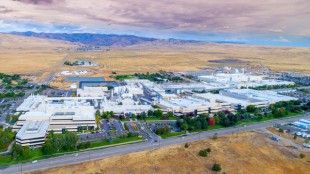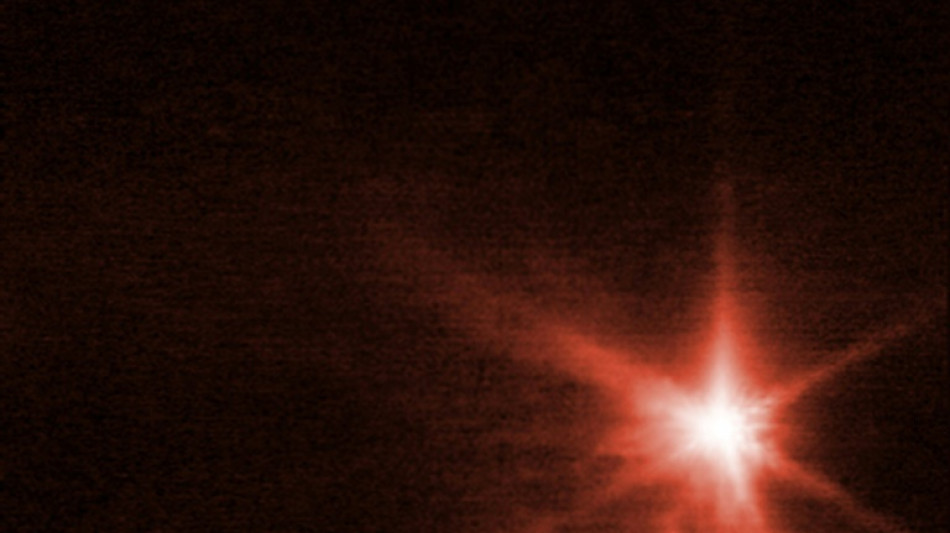
-
 Plastic pollution plague blights Asia
Plastic pollution plague blights Asia
-
Typhoon Podul pummels Taiwan, heads towards China
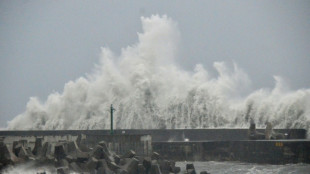
-
 Russia in major Ukraine advance as Europe braces for Trump-Putin meet
Russia in major Ukraine advance as Europe braces for Trump-Putin meet
-
Stock markets extend gains on growing US rate cut hopes

-
 Typhoon Podul pummels Taiwan, heads towards mainland
Typhoon Podul pummels Taiwan, heads towards mainland
-
In heatwave, Romans turn to vintage snow cones to stay cool

-
 Russia in major Ukraine advance ahead of Trump-Putin meet in Alaska
Russia in major Ukraine advance ahead of Trump-Putin meet in Alaska
-
Ankara, Damascus top diplomats warn Israel over Syria action

-
 Deadlocked plastics treaty talks 'at cliff's edge'
Deadlocked plastics treaty talks 'at cliff's edge'
-
Stock markets rise on growing US rate cut hopes

-
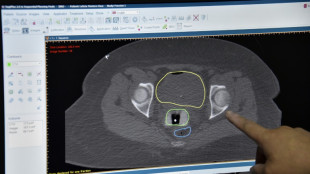 New cancer plan urged as survival improvements in England slow
New cancer plan urged as survival improvements in England slow
-
Japanese star convicted of indecent assault in Hong Kong

-
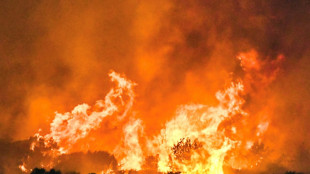 Thousands battle Greece fires as heatwave bakes Europe
Thousands battle Greece fires as heatwave bakes Europe
-
Woodman-Wickliffe lines up 'one last ride' for Black Ferns at World Cup

-
 Bournemouth splash out on Diakite as Zabarnyi replacement
Bournemouth splash out on Diakite as Zabarnyi replacement
-
Renowned Egyptian novelist Sonallah Ibrahim dies at 88

-
 Israel military says approved plan for new Gaza offensive
Israel military says approved plan for new Gaza offensive
-
Romero replaces Son as Spurs captain
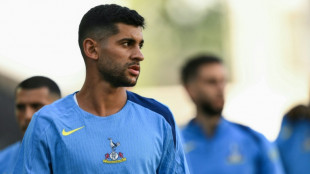
-
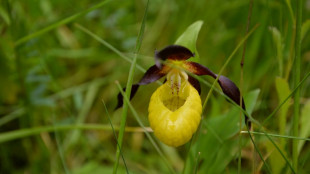 150 species saved in England, but 'time running out' to halt decline
150 species saved in England, but 'time running out' to halt decline
-
Man Utd in 'no man's land' due to lack of plan, says Rashford

-
 Musk clashes with Altman after accusing App Store of favoring OpenAI
Musk clashes with Altman after accusing App Store of favoring OpenAI
-
Zelensky, European leaders hope to sway Trump before Putin summit

-
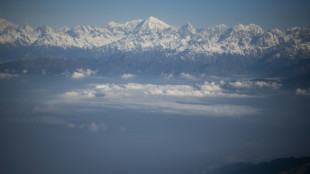 Nepal waives climbing fees for 97 mountain peaks
Nepal waives climbing fees for 97 mountain peaks
-
European satellite to step up monitoring of extreme weather
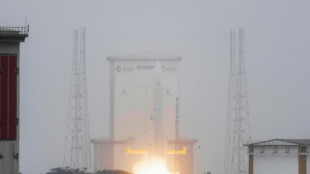
-
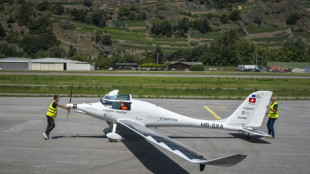 Swiss pilot surpasses solar-powered plane altitude record
Swiss pilot surpasses solar-powered plane altitude record
-
Typhoon Podul pummels Taiwan

-
 Markets rise on growing rate cut hopes
Markets rise on growing rate cut hopes
-
Czech film takes 'conspiracy nuts' on Ukraine war tour

-
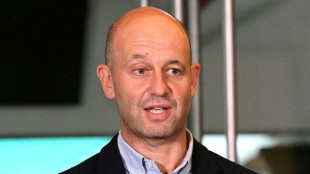 Test cricket needs quality not quantity to stay alive: Australia chief
Test cricket needs quality not quantity to stay alive: Australia chief
-
Spanish coach Riveiro lays down the law for Ahly stars

-
 Mali club hope motorbikes can help drive for CAF Cup glory
Mali club hope motorbikes can help drive for CAF Cup glory
-
Scientists unearth 'cute' but fearsome ancient whale
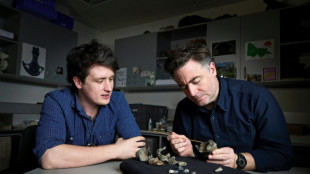
-
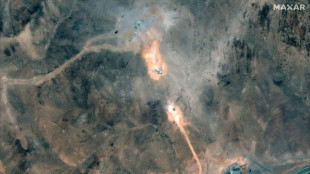 European powers tell UN they are ready to reimpose Iran sanctions
European powers tell UN they are ready to reimpose Iran sanctions
-
Typhoon Podul hits Taiwan
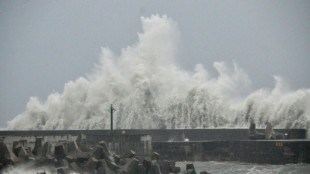
-
 South Korea prosecutors raid party HQ after ex-first lady arrested
South Korea prosecutors raid party HQ after ex-first lady arrested
-
Five key things about heatwaves in Europe

-
 For Trump, Putin summit presents the ultimate test of dealmaking
For Trump, Putin summit presents the ultimate test of dealmaking
-
Trump and Putin: a strained relationship

-
 Fortnite developer claims win against Apple and Google
Fortnite developer claims win against Apple and Google
-
Palestinian mother 'destroyed' after image used to deny Gaza starvation

-
 Soft US inflation boosts Asia markets
Soft US inflation boosts Asia markets
-
Glitz and graft: Pogba in race against time as Ligue 1 season looms

-
 Liga champions Barca aim to add steel to youthful flair
Liga champions Barca aim to add steel to youthful flair
-
'Nobody else knew': Allied prisoners of war held in Taiwan

-
 Putin, North Korea's Kim vow stronger ties ahead of US-Russia summit
Putin, North Korea's Kim vow stronger ties ahead of US-Russia summit
-
German gas drive fuels fears of climate backsliding

-
 India reels from US tariff hike threat
India reels from US tariff hike threat
-
European leaders to hold Ukraine online summit before Trump-Putin meet

-
 Chatbot Grok stirs confusion over suspension after Gaza claims
Chatbot Grok stirs confusion over suspension after Gaza claims
-
Dutch child survivor of Japan's WWII camps breaks silence

| RYCEF | 1% | 14.95 | $ | |
| RELX | -0.48% | 47.6 | $ | |
| RBGPF | 0% | 73.08 | $ | |
| CMSC | 0.35% | 23.16 | $ | |
| GSK | 2.34% | 39.135 | $ | |
| BP | 0.19% | 34.135 | $ | |
| RIO | 0.91% | 63.68 | $ | |
| BTI | -1.72% | 56.94 | $ | |
| NGG | 0.38% | 70.55 | $ | |
| SCU | 0% | 12.72 | $ | |
| VOD | 0.99% | 11.655 | $ | |
| SCS | 2.35% | 16.58 | $ | |
| BCC | 2.34% | 86.28 | $ | |
| JRI | 0.38% | 13.431 | $ | |
| BCE | 1.78% | 24.945 | $ | |
| CMSD | 0.41% | 23.657 | $ | |
| AZN | 2.76% | 77.48 | $ |

New asteroid strike images show impact 'a lot bigger than expected'
The James Webb and Hubble telescopes on Thursday revealed their first images of a spacecraft deliberately smashing into an asteroid, as astronomers indicated that the impact looks to have been much greater than expected.
The world's telescopes turned their gaze towards the space rock Dimorphos earlier this week for a historic test of Earth's ability to defend itself against a potential life-threatening asteroid in the future.
Astronomers rejoiced as NASA's Double Asteroid Redirection Test (DART) impactor slammed into its pyramid-sized, rugby ball-shaped target 11 million kilometres (6.8 million miles) from Earth on Monday night.
Images taken by Earth-bound telescopes showed a vast cloud of dust expanding out of Dimorphos -- and its big brother Didymos which it orbits -- after the spaceship hit.
While those images showed matter spraying out over thousands of kilometres, the James Webb and Hubble images "zoom in much closer", said Alan Fitzsimmons, an astronomer at Queen's University Belfast involved in observations with the ATLAS project.
James Webb and Hubble can offer a view "within just a few kilometres of the asteroids and you can really clearly see how the material is flying out from that explosive impact by DART", Fitzsimmons told AFP.
"It really is quite spectacular," he said.
An image taken by James Webb's Near-Infrared Camera (NIRCam) four hours after impact shows "plumes of material appearing as wisps streaming away from the centre of where the impact took place", according to a joint statement from the European Space Agency, James Webb and Hubble.
Hubble images from 22 minutes, five hours and eight hours after impact show the expanding spray of matter from where DART hit.
- 'Worried there was nothing left' -
Ian Carnelli of the European Space Agency said that the "really impressive" Webb and Hubble images were remarkably similar to those taken by the toaster-sized satellite LICIACube, which was just 50 kilometres from the asteroid after separating from the DART spacecraft a few weeks ago.
The images depict an impact that looks "a lot bigger than we expected," said Carnelli, the manager of the ESA's Hera mission which intends to inspect the damage in four years.
"I was really worried there was nothing left of Dimorphos" at first, Carnelli told AFP.
The Hera mission, which is scheduled to launch in October 2024 and arrive at the asteroid in 2026, had expected to survey a crater around 10 metres (33 feet) in diameter.
It now looks like it will be far bigger, Carnelli said, "if there is a crater at all, maybe a piece of Dimorphos was just chunked off."
The true measure of DART's success will be exactly how much it diverted the asteroid's trajectory, so the world can start preparing to defend itself against bigger asteroids that could head our way in the future.
It will likely take Earth-bound telescopes and radars at least a week for a first estimate of how much the asteroid's orbit has been altered, and three or four weeks before there is a precise measurement, Carnelli said.
- 'Huge implications' -
"I am expecting a much bigger deflection than we had planned," he said.
That would have "huge implications in planetary defence because it means that this technique could be used for much larger asteroids", Carnelli added.
"Until today, we thought that the only deflection technique would be to send a nuclear device."
Fitzsimmons said that even if no material had been "flung off" Dimorphos, DART still would still have slightly affected its orbit.
"But the more material and the faster it's moving, the more of a deflection there will have been," he said.
The observations from James Webb and Hubble will help reveal how much -- and how quickly -- matter sprayed from the asteroid, as well as the nature of its surface.
The asteroid impact marked the first time the two space telescopes observed the same celestial body.
Fitzsimmons said the images were "a beautiful demonstration of the extra science you can get by using more than one telescope simultaneously".
A.AlHaj--SF-PST


